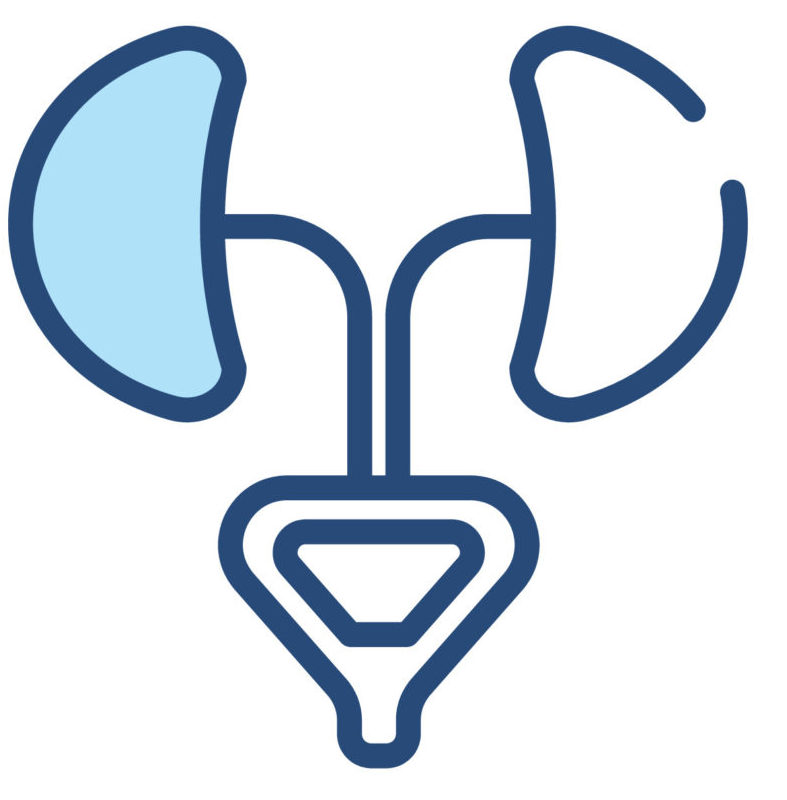Kidney Stones
Kidney stones are becoming increasingly common; 1 in 11 people in the UK will have stone symptoms at some point. The most common age for a first stone is 45 years.
Symptoms usually occur if the stone travels from the kidney into the ureter, where it may get stuck. This causes severe pain - many women say it is worse than childbirth – and sometimes requires hospital admission to control the pain. The pain typically travels from the loin/flank area to the groin, and sometimes to the testicle in men or labia in women.
Kidney stone pain associated with shivering or a high fever is a medical emergency and patients should always attend A+E if this is the case.
Diagnosis of a stone is usually via a CT scan. Blood tests and a urine test are often also carried out.
Smaller stones in the kidney may be safely observed if they are not causing an immediate problem. Stones that have passed into the ureter may pass without any intervention. This depends on the size and position of the stone. If you do pass a stone, it is worth keeping and passing on to your urologist for analysis. Certain types of stone may warrant further investigation and treatment.
If a ureteric stone is causing uncontrollable pain, or there is any evidence of an infection, a ureteric stent will need to be inserted under anaesthesia to unblock the kidney and relieve the pain. A stent is a thin tube that is passed under x-ray guidance from the bladder to the kidney via a camera inserted into the bladder.
Definitive treatment of stones can be performed in 3 ways, dependent on the size and position of the stone and also the “hardness” of the stone which can be estimated from the CT scan.
- Extracorporeal shock-wave Lithotripsy (ESWL) – a daycase procedure performed whilst awake. The stone is identified by ultrasound or xray and pulsed shockwaves are fired at the stone. Treatment is usually around 30 minutes and sometimes 3 sessions are required. Risks include blood in the urine, pain due to the stone fragments passing and failure of the procedure. The position, size or hardness of some stones prevents the use of ESWL.
- Ureteroscopy and laser fragmentation of the stone – this is a daycase procedure carried out under general anaesthetic. A thin camera is passed through the water pipe and bladder to the ureter. The stone is visualised and a laser used to fragment the stone. Some patients require a ureteric stent following the procedure. Risks include infection, need for multiple treatments and infection.
- Percutaneous nephrolithomy (PCNL) – this is the most invasive of the procedures. It involves placing an access tube through the back directly into the kindey. An instrument is placed into the kidney to find and fragment the stones. The hospital stay is usually 24-48 hours. Generally this procedure is reserved for larger kidney stones. (Mr Cohen does not perform PCNL procedures)

Contact Us

